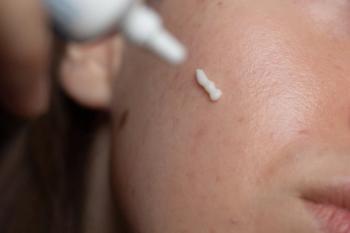
Clinical Pearls on JAK Inhibitor Utility and Research From Eileen Cheever, MPAS, PA-C
Key Takeaways
- JAK inhibitors have expanding indications in dermatology, with ongoing clinical trials exploring new uses.
- The JAK/STAT pathway is crucial in inflammatory cytokine signaling, influencing immune processes and gene activation.
Eileen Cheever, MPAS, PA-C, highlights the growing role of JAK inhibitors in dermatology, including emerging data on prurigo nodularis and adolescent alopecia areata.
At the 2025 Society of Dermatology Physician Associates (SDPA) Annual Summer Dermatology Conference, Eileen Cheever, MPAS, PA-C, of Clearview Dermatology in central Massachusetts, presented “Facts About JAKs,” a session spotlighting the expanding role of JAK inhibitors in dermatologic practice.
Cheever emphasized that there are “so many different current indications for JAK inhibitors, as well as a number of emerging areas that I think we as clinicians need to be aware of.” The goal of her lecture, she explained, was to provide “a brief overview of the JAK/STAT pathway to levelset everybody, but also just the current lay of the landscape about what we know about the current FDA-approved JAK inhibitors.”
She reviewed investigational uses, as well: “There's also some really interesting investigational uses and things that are currently in clinical trials.”
Cheever then provided a clear overview on the pathway’s mechanism.
“We all know that the JAK/STAT pathway is a signaling mechanism that a lot of the inflammatory cytokines use to influence immune processes. We know that the cytokine, it binds to the receptor, and when it binds that receptor on the cell surface, that activates JAK, Janus kinases, and that's an enzyme that attaches to the inside of the receptor,” she said. “That then recruits STATS, and those STATS are phosphorylated, and those STATS then head over to or translocate to the nucleus, and when they do so, they turn on genes that continue to propel that inflammatory condition that our patients have.”
Cheever spotlighted 2 recent areas of interest in recent and upcoming JAK inhibitor data.
Ruxolitinib for Prurigo Nodularis
“The first is regarding ruxolitinib cream, actually in phase 3 trials for ruxolitinib cream for prurigo nodularis,” Cheever said. “As we know, prurigo nodularis is a very burdensome condition in our clinics. It's also quite a burdensome condition for our patients. There is a large psychosocial impact with patients who have prurigo nodularis, as well as a cosmetically disfiguring component to it.”
The TRuE-PN1 and TRuE-PN2 trials showed that 44% of the patients who used ruxolitinib cream had a 4-point reduction or more in their itch after 12 weeks in TRuE-PN1 with notable improvements in quality of life and pruritus as early as day 4, she said.
“That is a JAK inhibitor that is already in our space, and we're using it for alopecia, for vitiligo, and we're using it for atopic dermatitis. But this is a study that shows there may be a new utility for this product,” she added.
JAK Inhibitors in Adolescents
“What we're also seeing is some really interesting information regarding adolescents and their treatment journey with alopecia areata,” she noted. She highlighted the BRAVE-AA-PEDS study, which evaluated baricitinib in adolescents with severe alopecia areata.
“The phase 3 BRAVE AA-PEDS study with baricitinib is the largest study of a JAK inhibitor with adolescents who have severe alopecia areata,” Cheever said. “The study actually showed that these adolescents are actually regrowing faster at quicker rates than we see in our adult patients. We're seeing a safety profile, which of course is reassuring for our younger population, that is consistent with the adult data. We're hoping that baricitinib continues to be, down the line, an option for those adolescent patients who are looking for treatment for their severe alopecia areata with a safe, effective safety profile in treatment, as well.”
Make sure to keep up to date with the latest in coverage from the conference and subscribe to Dermatology Times to receive daily email updates .
Newsletter
Like what you’re reading? Subscribe to Dermatology Times for weekly updates on therapies, innovations, and real-world practice tips.


















